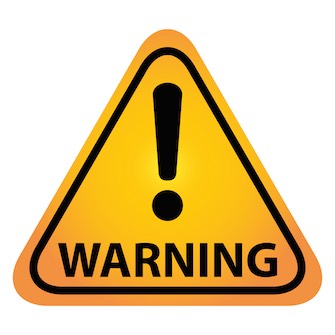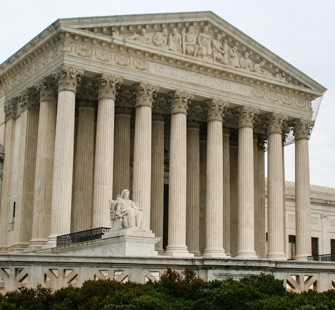Octane Fitness acquired by Nautilus for $115 million
North Castle Partners announced the sale of Octane Fitness, LLC, a manufacturer of zero-impact cardiovascular fitness equipment, to Nautilus, Inc. (NYSE: NLS) for a purchase price of $115 million.
Those familiar with the patent industry will readily recognize the name Octane Fitness. It was Octane Fitness, the much smaller company, that successfully sued and prevailed in a patent infringement lawsuit against ICON Health & Fitness. The case went all the way to the United States Supreme Court on the issue of attorneys’ fees. A unanimous Supreme Court ruled that the district court has broad discretion to award attorneys’ fees under Section 285 of Title 35 of the United States Code. See Octane Fitness, LLC v. ICON Health & Fitness, Inc.
Rudy Telsher represented Octane Fitness, and in July 2015, I had an opportunity to speak to him on the record. Telsher explained that many people incorrectly jumped to the conclusion that Octane was a patent troll. Quite to the contrary, ICON accused Octane of infringing one of its patents that was never commercialized, “so in that sense [ICON] was a non-practicing entity as to the patent and suit,” Telscher explained. “[Octane] had award winning technology covered by a different patent.”
When I learned of the acquisition of Octane Fitness by Nautilus, I reached out to Telsher for a comment. “Happy ending to a long battle,” Telscher said. “Octane did it by the book. They developed award-winning technology. When that technology got challenged by ICON, under the pretense of patent claims that never should have been brought, they defended all the way to the Supreme Court. A fabulous ending to a little guy stands up to the big guy battle.”
Incidentally, in unrelated news that will keep the name Octane Fitness in the forefront of minds of those in the patent industry, the Supreme Court is currently considering whether to extend the Octane Fitness ruling. In Octane Fitness, the Supreme Court ruled that district court judges should be given broad discretion to award attorneys’ fees, overruling the Federal Circuit and explaining that their interpretation of prior Supreme Court precedent was erroneous. That same Federal Circuit reasoning deemed erroneous has been similarly applied by the Federal Circuit in analyzing awards of enhanced damages for patent infringement. Therefore, this term, the Supreme Court must decide whether to also give district court judges broad discretion to enhance patent infringement damages pursuant to 35 U.S.C. 284. Stay tuned. Oral arguments were heard on February 23, 2016, and a decision will be handed down no later than the end of June 2016.
Relative Terminology: Like, just don’t use it in the claims
 The use of relative terminology, which are short-hand terms that express a certain similarity, are quite common in everyday conversation, but present real and present dangers when used without serious deliberate thought and consideration in a patent application. The use of relative terminology is most seriously problematic in patent claims specifically. This is true because patent claims must particularly point out and distinctly claim the subject matter invented. See Distinctly identifying the invention in exact terms. Therefore, the use of relative terminology in patent claims comes with real risks that must not be taken lightly.
The use of relative terminology, which are short-hand terms that express a certain similarity, are quite common in everyday conversation, but present real and present dangers when used without serious deliberate thought and consideration in a patent application. The use of relative terminology is most seriously problematic in patent claims specifically. This is true because patent claims must particularly point out and distinctly claim the subject matter invented. See Distinctly identifying the invention in exact terms. Therefore, the use of relative terminology in patent claims comes with real risks that must not be taken lightly.
Relative terminology is problematic because certain words that you might want to use are not nearly as descriptive as you might think. The description you are providing by relying on relative terms can leave open the possibility of miscommunication and ambiguity. Ambiguity is the archenemy of patent drafters and must be avoided.
03.10.16 | Patent Applications, Patent Drafting, Patent Issues, Patent Prosecution | Gene Quinn
Supreme Court will decide whether BRI or Phillips standard applies to IPR claims
 During patent examination, pending patent claims are given the broadest reasonable interpretation (“BRI”) that is consistent with the specification, as would be understood by one of ordinary skill in the art. See Phillips v. AWH Corp., 415 F.3d 1303, 1316 (Fed. Cir. 2005).
During patent examination, pending patent claims are given the broadest reasonable interpretation (“BRI”) that is consistent with the specification, as would be understood by one of ordinary skill in the art. See Phillips v. AWH Corp., 415 F.3d 1303, 1316 (Fed. Cir. 2005).
The Patent Office applies the broadest reasonable interpretation in virtually all circumstances. It is, however, true that at least one situation where the Patent Office does not use broadest reasonable interpretation is when a reexamination of a patent is undertaken and reexamination will not be concluded until after the patent term has expired. The position of the USPTO is that, in this situation, a patent could not be changed because the term has expired; therefore, the only remaining “life” a patent has would be in litigation because the statute of limitations for a patent infringement action is six years. Thus, the USPTO applies the Phillips standard. (Further discussion of this advanced topic goes beyond the scope of this article, which is intended to be a primer on the broadest reasonable interpretation standard.)
Finjan shows patent owner can prevail at IPR institution stage
 Finjan Holdings, Inc. (NASDAQ: FNJN), the parent of wholly owned subsidiary Finjan, Inc., recently announced that the Patent Trial and Appeal Board (PTAB) for the United States Patent & Trademark Office (USPTO) denied six of Symantec Corporation’s petitions for inter partes review (IPR) of Finjan patents.
Finjan Holdings, Inc. (NASDAQ: FNJN), the parent of wholly owned subsidiary Finjan, Inc., recently announced that the Patent Trial and Appeal Board (PTAB) for the United States Patent & Trademark Office (USPTO) denied six of Symantec Corporation’s petitions for inter partes review (IPR) of Finjan patents.
“This is an unprecedented response by the US Patent Office,” stated Phil Hartstein (left), President and CEO of Finjan, upon learning of the decision of the PTAB.
The word “unprecedented” gets thrown around all too frequently, but the use of the word here does seem entirely appropriate. That Finjan would prevail in six separate IPR institution decisions relating to the same patent litigation seems nothing short of extraordinary given that the PTAB is instituting 80% of IPR petitions, and given how slanted IPR rules are against the patent owner, particularly at the institution stage.
03.9.16 | Inter Partes Review, Patent Issues, USPTO | Gene Quinn
IBM is top patenting company for 23rd straight year
 IBM has once again has topped the list of annual U.S. patent recipients, receiving 7,355 patents in 2015. This marks 23 straight years that IBM has received more U.S. patents than any other entity, a testament to IBM’s commitment to innovation.
IBM has once again has topped the list of annual U.S. patent recipients, receiving 7,355 patents in 2015. This marks 23 straight years that IBM has received more U.S. patents than any other entity, a testament to IBM’s commitment to innovation.
IBM’s 2015 patent haul represents a diverse range of inventions as well as a strong and growing focus on cognitive solutions and the cloud platform as the company positions itself for leadership in a new era of computing. For example, IBM inventors generated more than 2,000 patents in areas related to cognitive computing and the company’s cloud platform.
During our two most recent in-depth looks at IBM’s U.S. patent portfolio (see here and here), we found dozens of patents issued in 2015 relating to patient health…hardly surprising given IBM’s move to deploy its remarkable super-computer known as Watson into the medical field. Watson, which became famous for winning on Jeopardy!, is the first generation omnipotent computer sci-fi fans have dreamed of.
03.8.16 | posts | Gene Quinn


No Comments
03.12.16 | Patent Issues, posts | Gene Quinn